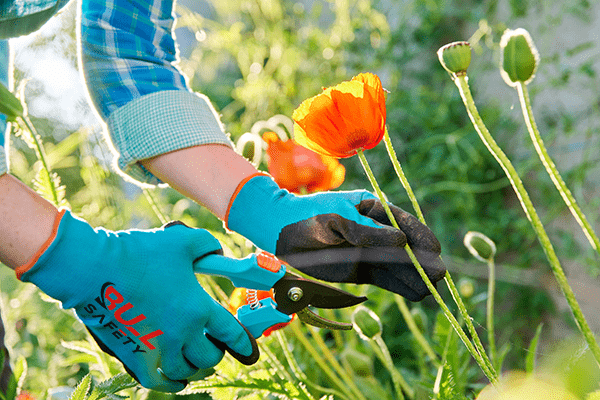
I used to think gardening gloves were optional—until I got painful blisters, scratches, and even an itchy rash from handling plants. After that, I never gardened without gloves again.
Yes, wearing gloves while gardening is essential. They protect your hands from cuts, bacteria, chemicals, and harsh weather. They also improve grip and prevent blisters.
I once pricked my finger on a hidden thorn while weeding, and it got infected. That moment taught me how crucial gloves are. Let’s dive into why they should be part of your gardening gear.
What Are Gardening Gloves Used For?
I have seen many gardeners work with bare hands. While it might seem natural, it can also be risky. Gloves are not just for comfort; they’re for protection.
Gardening gloves serve multiple purposes: they shield hands from dirt, bacteria, thorns, and blisters. They also help with grip and handling heavy tools.

Why Gloves Matter in Gardening
- Hand Protection – Prevents scratches, blisters, and contact with harmful bacteria.
- Better Grip – Reduces tool slippage, especially in damp conditions.
- Chemical Barrier – Protects against fertilizers, pesticides, and soil-borne pathogens.
Choosing the Right Gloves
| Glove Type | Key Feature | Best For |
|---|---|---|
| Cotton | Lightweight and breathable | Light planting, dry soil tasks |
| Nitrile | Water-resistant and durable | Wet conditions, muddy work |
| Leather | Thick and rugged | Heavy-duty pruning, thorny plants |
At BULLSAFETY, I see how different gardening needs require different gloves. My team has spent years refining glove materials to offer comfort and protection. Our nitrile-coated gloves, for example, provide an excellent grip for wet soil tasks.
Which Gardening Gloves Are Best?
I have tested dozens of gloves over the years. The best ones balance comfort, durability, and protection.
The best gardening gloves fit well, provide flexibility, and protect against moisture and sharp objects. Leather gloves are great for thorns, while nitrile-coated gloves handle wet conditions.

Factors to Consider:
- Fit: Snug, but not too tight.
- Material: Breathable for comfort, reinforced for durability.
- Protection Level: Choose thorn-resistant gloves for pruning.
Comparison of Glove Features
| Feature | Why It Matters | Best Choice |
|---|---|---|
| Breathability | Prevents sweaty hands | Cotton, knitted-back gloves |
| Waterproofing | Keeps hands dry in wet soil | Nitrile-coated gloves |
| Thorn Resistance | Protects from scratches and cuts | Leather gloves, reinforced palms |
Many customers I work with, like Jason from Canada, look for gloves with certifications such as EN388 or Oeko-Tex. They want gloves that balance cost and performance. That’s why I ensure our BULLSAFETY gloves meet these high standards.
Do Gardening Gloves Stop Thorns?
I used to get scratches every time I pruned my roses. That’s when I realized not all gloves can handle thorns.
Yes, but only certain gloves. Thorn-resistant gardening gloves have reinforced palms, thicker material, and sometimes Kevlar lining to block punctures.
Key Features of Thorn-Proof Gloves:
- Double-layered palms for extra durability.
- Long cuffs to protect wrists from scratches.
- Kevlar, leather, or thick nitrile for superior resistance.
Best Gloves for Thorn Protection
| Feature | Benefit | Best Material |
|---|---|---|
| Reinforced Palms | Stops thorns from piercing | Leather, Kevlar |
| Extended Cuffs | Protects wrists from scratches | Gauntlet-style gloves |
| Impact Panels | Reduces force from thorns | TPR-coated gloves |
Conclusion
Gardening gloves protect your hands, improve your grip, and keep you safe from cuts, chemicals, and thorns. Choosing the right gloves depends on your tasks—light planting, wet soil, or thorny pruning. Whatever your gardening needs, a good pair of gloves makes a big difference.



